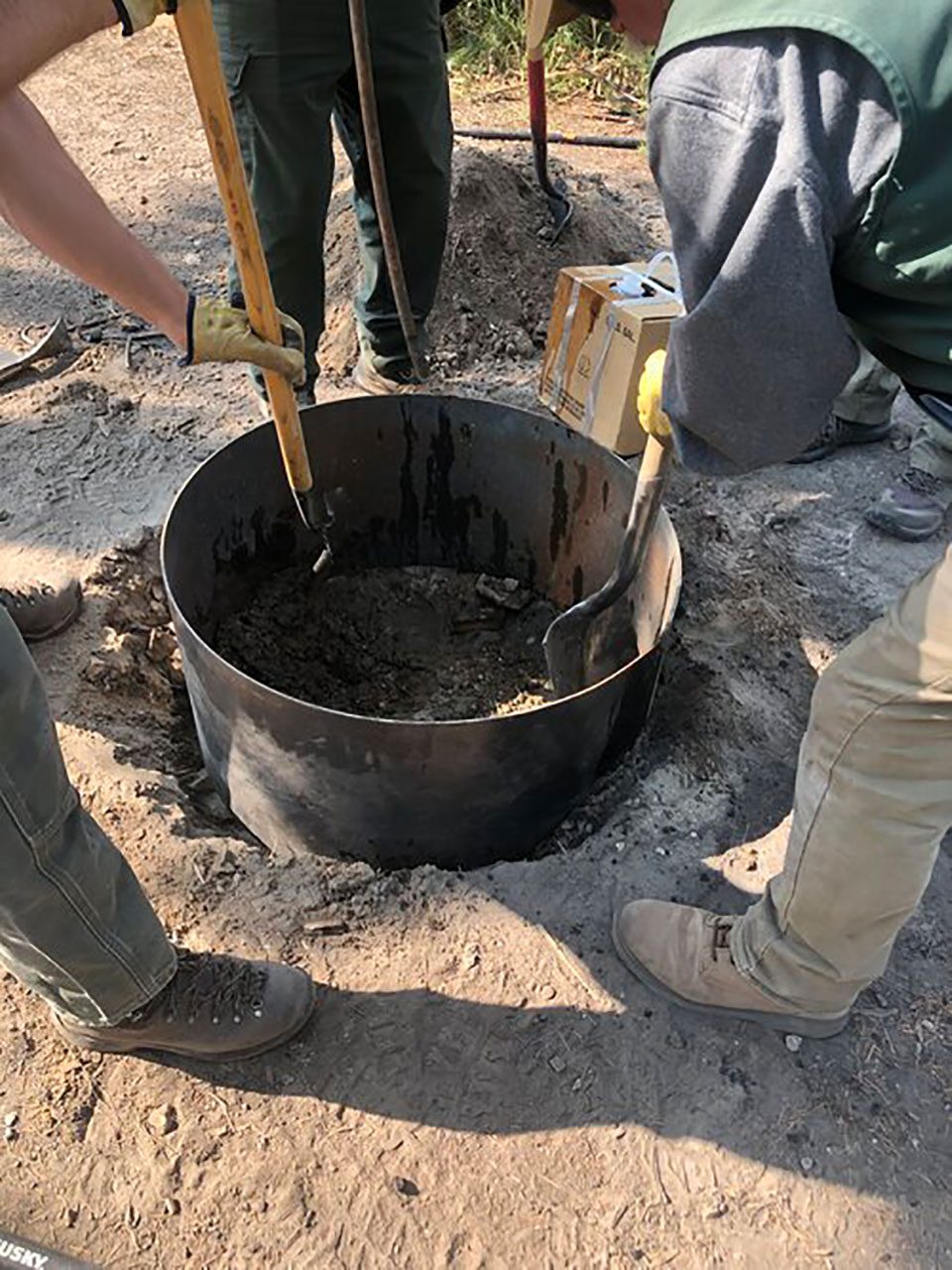In 2021 and 2022, Friends of the Bridger-Teton was able to fund the fabrication of 80 fire rings, which were installed by volunteers at two of the busiest dispersed camping areas on the 3.4 million acre forest, Shadow Mountain and Topping Meadow. (Shadow Mountain now has a fire ring at each of its designated campsites.) One of the nonprofit’s goals in 2023 is to fund 500 additional fire rings; an order of 65 has already been made.

“The summer of 2022 is the first year we experienced a downward trend in campfires left burning [on the forest],” says Lesley Williams, Bridger-Teton National Forest North Zone Fire Prevention Specialist. “We strongly believe this positive change is due to the Friends of the B-T Ambassador program and the metal fire rings gifted from generous donors.”
“Fire rings have helped to reduce the number of unattended/abandoned campfires when compared to those fires left in rock rings within the very busy camping areas of Toppings and Shadow Mountain,” Williams says. Liz Pipes, who, with her husband Chris, are the FBT’s Shadow Mountain Ambassadors, says, “The fire rings make the camping experience better for visitors and also safer.” As part of this volunteerism, which the Pipeses have now done for three years, the couple checks in with campers and monitors campsites to make sure that fires are fully extinguished. “People have been saying that they’re happy to have the fire rings here. They actually like to know that there is a defined place to have a fire.” Pipes says the fire rings should make it more difficult for a campfire to get out of control and become a wildfire. “Because the fire rings are set in the ground, and they have each been installed in an area designated by Lesley [Williams], they are safer than the rock fire rings that people build on their own. These are placed taking surroundings like adjacent vegetation and wind conditions into consideration when they’re set into the ground, so it’s less likely when a spark is emitted and transported in the wind, it is less likely to ignite a fire.”
But most campsites—there are more than 1,000—on the BTNF do not yet have fire rings. While the number of campfires left burning last summer decreased, Campground Ambassadors across the BTNF still extinguished almost 200 abandoned campfires, any of which could have become a wildfire like the human-caused Green Knoll fire that burned 4,500 acres of the BTNF south of Wilson in 2001. “Should a campfire escape and become an unwanted wildfire in these areas of high visitor use, both the visiting public and local residents living in proximity to these areas will be exposed to unnecessary risks to health, property, and safety,” Williams says. “For example, an unplanned wildfire on Phillips Ridge/Teton Pass, an area with a minimum of 200 visitors a day, would threaten the lives and safety of recreationalists in the area, but also negatively impact the communities of both Jackson Hole and Teton Valley, Idaho—from the local infrastructure to the local economy.”
All of the 2021 and 2022 fire rings, which are made of welded rolled steel, were fabricated by Steve Reed at Alan’s Welding, a Jackson-based business. Once fabricated, the fire rings are usually installed by volunteers. In June 2021, teams of high school students visiting Jackson Hole from Houston, Texas as part of a Teton Science School program installed 17 fire rings on Shadow Mountain. “I had never made a fire ring before,” says Devon Grant, 17, one of the student volunteers. “And then I ended up putting in three of them. It was a lot of work, but I was down for it. The experience was cool.”
Installing fire rings requires digging deep enough into the ground so that the bottom half of the ring is below grade, pouring Quikrete around the fire ring’s footers, backfilling the hole, and then surrounding the steel fire ring with rocks. But installing fire rings is about more than the physical work, Williams says. “In Fire Prevention, we have what we call the 3 Es: Education, Engineering, and Enforcement,” Williams says. “[Installing fire rings] meets two of the three tiers and helps reduce the campfire violations, which limits the need for fines while increasing education and safety to the public and our community. We are so appreciative of the support from the public towards our local fire prevention program.”
Donors interested in supporting fire rings should contact Scott Kosiba, FBT’s Executive Director at scott@btfriends.org. Each fire ring costs about $700 to fabricate, install, and maintain.




